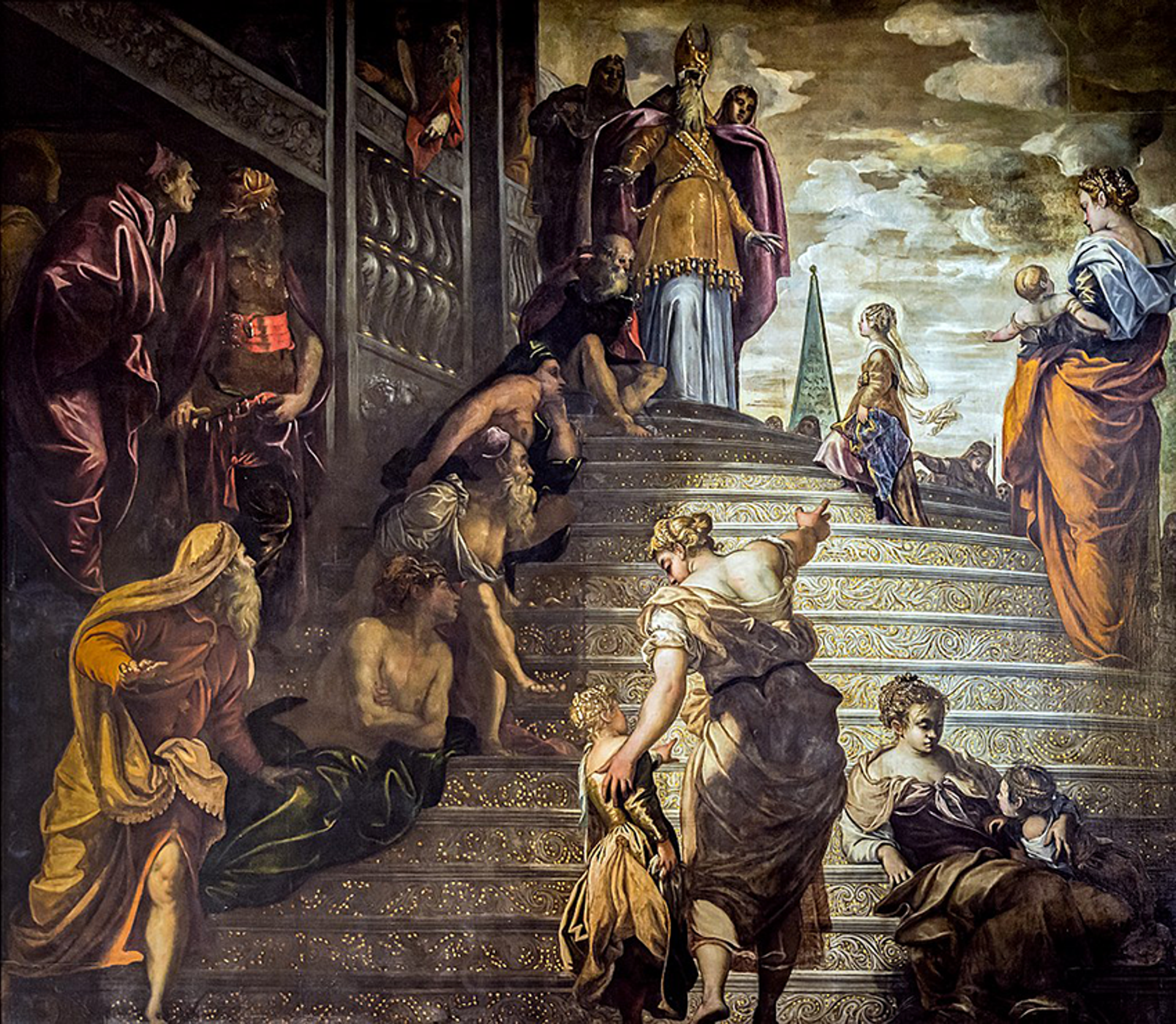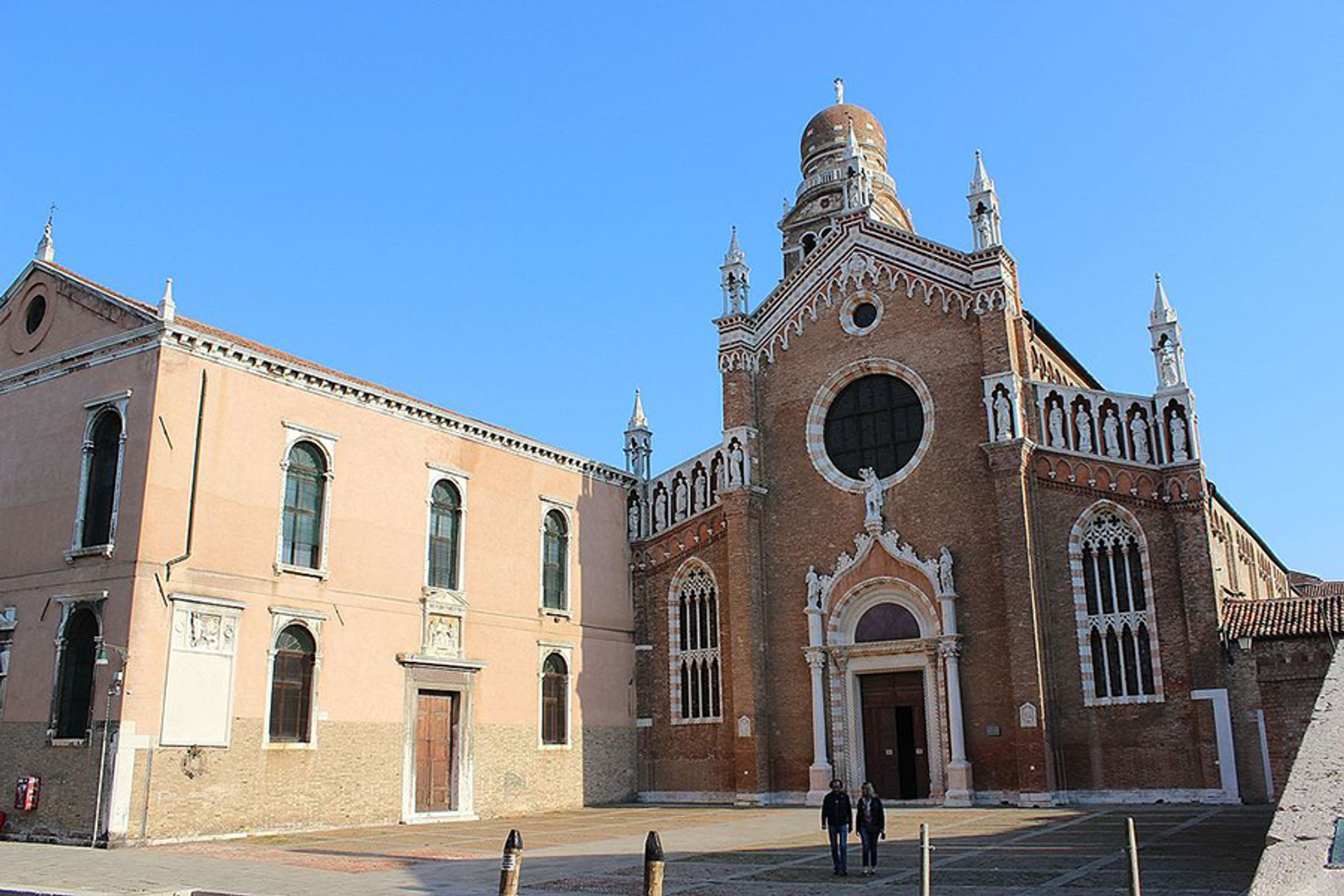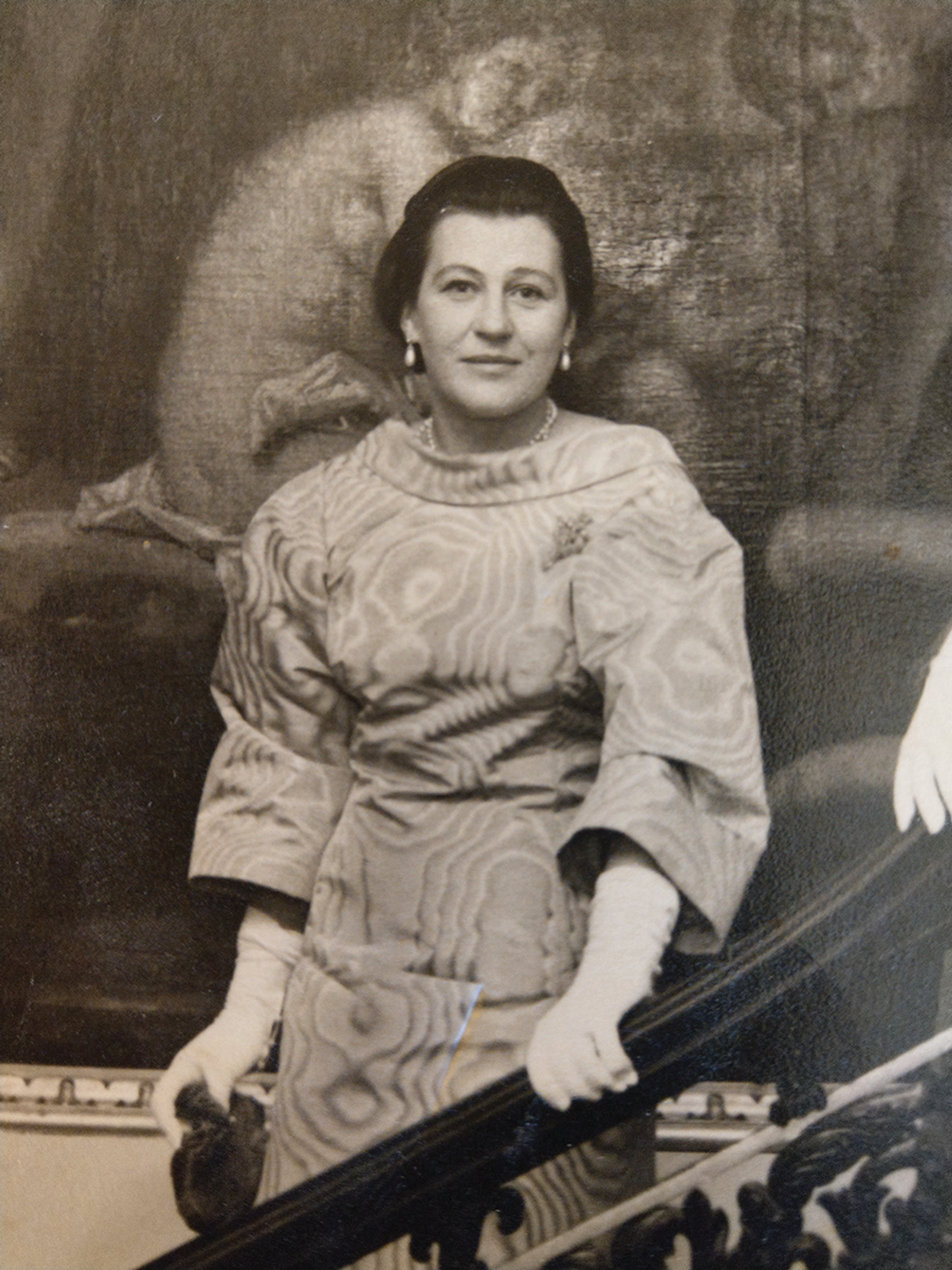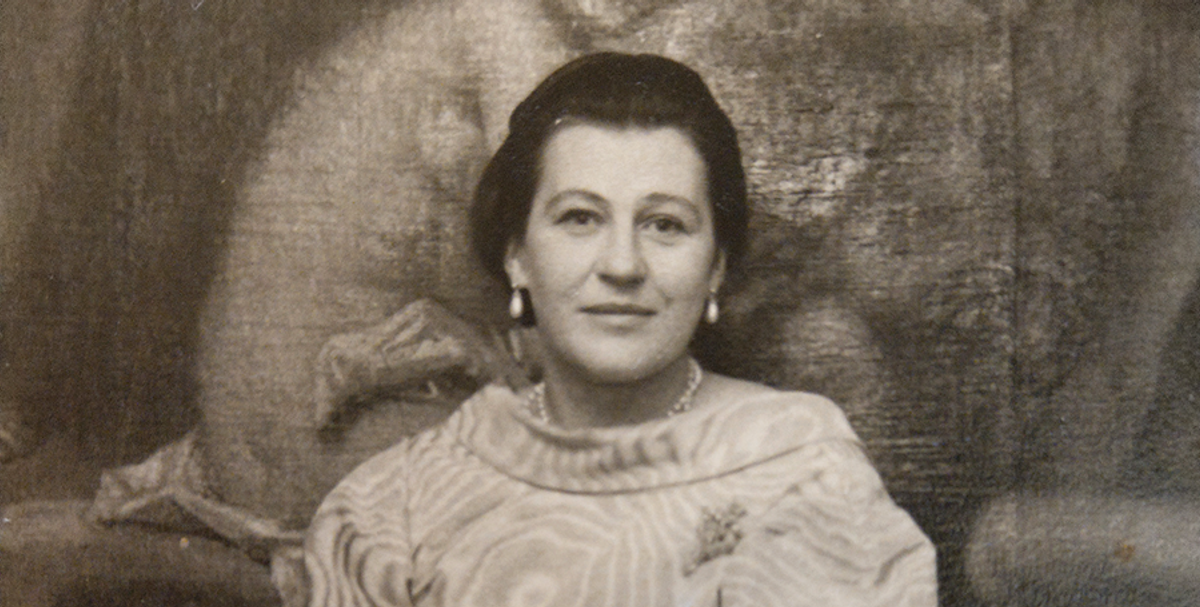After Venice and Florence suffered devastating flooding on the same day, 4 November 1966, there was a global outpouring of support from artists, fund-raisers and politicians to save the enormous quantity of art, books, archives and buildings damaged in both cities. In London, Sir Ashley Clarke, former British Ambassador to Rome, set up the Italian Art & Archives Rescue Fund— reconstituted in 1971 as the charity Venice in Peril — and was supported from the start by two remarkable partners: Carla Thorneycroft, the Italian-born former fashion editor of Vogue, and wife of the Conservative politician Peter Thorneycroft; and Nathalie Brooke, a Russian-born grande dame of the London art, music and political worlds.
For the next half-century, Brooke was a leading figure at Venice in Peril, for many years its honorary secretary, working in harmony with its first chairman, John Julius Norwich, and his successor, Anna Somers Cocks, the founder of The Art Newspaper. The charity has raised millions of pounds for conservation projects — one of the most substantial and interesting the restoration of Tintoretto’s local church, the Madonna dell’Orto, and its rich array of the artist’s work — but also for research on protecting the city’s lagoon and canals from subsidence, pollution, global warming and the excesses of tourism.
Venice and the Royal Academy
Brooke was well suited to the role. She had formidable connections as one half of an art-world power couple—her husband Humphrey Brooke was secretary of the Royal Academy from 1952 to 1968—and was intellectually rigorous in questioning the whys and wherefores of each new project. She was also someone it was difficult to say no to—a vital quality when donors had to be cajoled into supporting the charity’s fund-raising events. With her striking appearance—she was a Bohemian beauty in her youth—penetrating gaze and quick but clear, even-toned enunciation, she drew attention in any company, and usually got her way. But she was no killjoy. She had a winning smile, a confiding laugh, and knew how to make a party go with a swing. At her ruby wedding party, held at the Royal Academy, she gamely wore her 40-year-old wedding dress—a demonstration as much of her sporting character as of her iron will.

Tintoretto's Presentation of the Virgin at the Temple, 1548-51, in the church of Madonna dell'Orto, one of Venice in Peril's most important conservation projects
The Centre for Policy Studies
In the 1980s she worked as executive secretary at the Centre for Policy Studies (CPS), Margaret Thatcher’s favourite think tank, where she formed a happy triumvirate with its chairman, the eminent historian Hugh Thomas (Baron Thomas of Swynnerton), and its head of publications, Oliver Knox. In the CPS’s Westminster town house, she had a multi-faceted role: at one moment liaising with 10 Downing Street on the telephone, the next lending a sympathetic ear to a junior member of staff in her downstairs office. She knew what made the building, and its inhabitants, tick, and was a source of good, bracing advice, freely offered. In her time, the emphasis of research broadened from free markets and monetarism to take in more foreign affairs, and Knox’s series of witty, satirical pamphlets. On a private visit to the Soviet Union in 1989, her Russian failed her only when she was asked to explain her work at the CPS. “Perhaps it is impossible to explain it coherently in any language,” she noted in her diary. “How is one to get across the rich and varied life of that institution to a country starved of originality and shackled by bureaucracy?”
Infancy in the Soviet Union
She was born Nathalie Benckendorff, in Moscow, in 1923. Her mother Maria Korchinska, one of the finest harpists of the 20th century, was already a professor at the Conservatoire and lead harpist at the Bolshoi Theatre. Her father, Count Constantine Benckendorff, a former naval officer—in first the Imperial and then the Red navies—was descended from generations of military and political leaders under the Romanovs. He had been moved to the naval reserve and, since the family estates and industrial holdings had been forfeited after the Russian Revolution of 1917, was making a living as a flautist. Constantine’s father, Count Alexander Benckendorff, the last Imperial Russian ambassador to London, had died in January 1917, worn out by the strain of the war and the months leading up to its outbreak when he and the German ambassador, his first cousin Prince Karl Max Lichnowsky, found themselves powerless to calm Berlin’s obdurate sabre-rattling.
A new life in England
The Benckendorffs, like most Russians living in straitened circumstances despite Maria’s honoured position in the music world, persuaded the authorities to allow her to go on tour in 1924—with husband, infant daughter and two harps in tow. Warned that their lives would be in danger if they returned, they stayed in England, where they received a warm welcome from Nathalie’s widowed grandmother Sophie Benckendorff (a gifted book illustrator) at Lime Kiln, in Claydon, near Ipswich; from Constantine’s sister Nathalie Ridley—who lived with her banker husband, Jasper Ridley, a quarter of a mile up the road at Mockbeggars Hall—and from the family’s closest friend, the writer Maurice Baring, whom Maria found “exquisitely sensitive” to her feelings of exile in the peace and prosperity of England.

Exterior of the Madonna Dell'Orto. The church's restoration was funded by the Italian Art & Archives Rescue Fund, forerunner of Venice in Peril
Baring had recently published a memoir, The Puppet Show of Memory (1922), which contains a winning portrait of a cultivated, disputatious way of life on the old Benckendorff estate at Sosnofka, 300 miles south-east of Moscow. In one sitting-room, Baring writes, there was a “bookcase full of books of reference, which were constantly consulted, whenever, as so often occurred, there was a family argument”.
Post-war work in Vienna
Nathalie grew up in London and Suffolk, while her mother built a career in Britain, touring with the Griller Quartet and performing world premieres of works by Arnold Bax and Benjamin Britten—Korchinska premiered the final version of A Ceremony of Carols at the Wigmore Hall, London, with Britten conducting, in December 1943. In wartime, Nathalie joined the Auxiliary Training Service while her younger brother, Sasha, served in the Navy, in the northern convoys. In April 1945 she was transferred to Vienna where, in a divided, shadow-filled city, she worked as interpreter and subsequently liaison officer with the Allied Commission for Austria. It was a foundational experience, where she developed organisational skills in a high-stakes environment. Nathalie’s letters to her mother, now in the Imperial War Museum, are a useful resource on post-war conditions in Italy and Austria, recounting strained relations with Soviet representatives in Vienna, and a trip into the Soviet zone.
Suffolk life
In Vienna she met the art historian Lieutenant Colonel Humphrey Brooke, then controller of the commission’s monuments, fine arts and archives branch. They were married in London in 1946— with a full Orthodox wedding—and divided their life between London, his house in Yorkshire and, latterly, Lime Kiln. In 1954 her father published Half a Life, his memoir of youth in Russia, in which he thanked Nathalie “without whose indefatigable, stubborn, and… stern collaboration” the book would never have appeared. Her “stern collaboration” was likely key to the book’s dispassionate, nostalgia-free tone. In Suffolk, the Brookes were friends and neighbours of her mother’s old collaborators Britten and Peter Pears, and for more than three decades the historian Steven Runciman was their guest for annual pilgrimages to Britten’s Aldeburgh Festival; lunch parties at Lime Kiln had Russian sparkle and a high intellectual gauge.
In 1968, Humphrey developed bipolar disorder and was forced to retire from the Royal Academy. As part of his therapy, he became an expert rose grower at Lime Kiln, setting up the first rosarium in Britain and cultivating 500 species and more. Despite her husband’s illness, Nathalie never fell victim to self-pity, nor did she when all three of their children pre-deceased her: a son at seven, a daughter at 17 and another daughter in 2010, leaving Nathalie with four beloved grandchildren.

Intellectual rigour: Nathalie Brooke at the Royal Academy, in London Photograph: courtesy Leo Dugdale
A journey to Sosnofka
Humphrey Brooke died in 1988. The following year—in the first flood of perestroika—Nathalie accepted an invitation to the Soviet Union from Rodina, a society that promoted cultural links with people of Russian origin living overseas. It was not her first visit to the country of her birth but at its heart was a tour of the estate at Sosnofka, and the regional museums in Tambov and Morshansk. She travelled from Moscow with Trevor Fishlock of the Daily Telegraph, who was covering her visit, and kept a vivid diary of her own, one that shows what made her such a remarkable cultural ambassador.
Emotions ran high as one aged man after another stepped forward at Sosnofka with memories of playing in the woods with her father and aunt, or of driving out in the troika with her great uncle Paul Benckendorff, author of Last Days at Tsarskoe Selo (1927)—a first-hand account of life with the Romanovs under detention at the Alexander Palace, near St Petersburg, before they were sent to their eventual deaths at Ekaterinburg. At Morshansk one old museum worker stepped forward, declaring: “It’s always the Benckendorff women who ran the estates here; they were wonderful at it; I know if you were here you would be the same.”
Diplomatic skills
But the diary is just as remarkable for demonstrating how au courant Brooke was with the latest developments in museum curation—with clear analysis of the selection and display of ethnographic objects as much as applied arts and sculpture – drama and historiography. In Tambov she is taken to a performance of Molière’s Tartuffe—revelling in “a really way-out production, with lots of music, wonderfully zany costumes; the whole more reminiscent of the Rustaveli Georgian theatre’s production of Richard III than anything else”—whose director (“wildly attractive”) discusses with her Michael Glenny’s 1987 English translation for the Royal Shakespeare Company of Sarcophagus (1986), Vladimir Gubaryev’s critique of the handling of the nuclear meltdown at Chernobyl. A subject that that she had discussed in detail with Glenny and the RSC before leaving London.
In a series of formal meetings with party officials, museum directors and church leaders, with their mix of agreeable talk, formal niceties, toasts and kissing of hands, she showed the diplomatic skills—and patience—she had developed in post-war Vienna. And when she was taken round the house-museum of Georgy Chicherin, Lenin’s first minister of foreign affairs, in Tambov, with “his desk and bookcase (both finest Empire)” sent down from Moscow, they went upstairs to the sound of Mozart “as [Chicherin] wrote a book on Mozart which, I’m ashamed to say, I didn’t know”. That passing shame sums up the high standards of general knowledge, of preparedness, that she expected of herself, and of others.
Back in Moscow she had an audience at the Institute of Military History, with General Dmitri Volkogonov, whose revisionist (once banned) biography of Stalin—the first of several on the Soviet Union’s founding fathers—was keenly anticipated in the Soviet Union (and later in English in Harry Shukman’s edition). Her Rodina guide was overcome with excitement, telling Brooke he “is the most popular man in the Soviet Union at the moment. Everyone is longing for his life of Stalin, and even though 250,000 copies are being printed, it isn’t nearly enough.”
A guide to Russian history
In her 30 years of widowhood Brooke kept up her work for Venice in Peril and acting as a tour leader for the high-end travel agency Serenissima— sometimes serving as buffer and peacemaker between other grandly forceful European women. She and her cousin Sir Adam Ridley aided researchers into the Benckendorffs’ contribution to Russian life over two centuries, depositing papers in libraries—a trove of Benckendorff papers, discovered in the attic at Lime Kiln, went to the Bakhmeteff Archive in New York’s Columbia University—and helping historians, including Marina Soroka, author of Britain, Russia and the Road to the First World War: the fateful embassy of Count Aleksandr Benckendorff 1903-16.
She was delighted to find that journalists and curators were 'just as interested in my mother and her musical career as in the Benckendorffs'
Brooke had been delighted to find on her 1989 visit to the Soviet Union that journalists and curators were “just as interested in my mother and her musical career as in the Benckendorffs”, and she enthusiastically helped former pupils, in Russia and England, to preserve the Korchinska name and the “Russian sound”. With her mother’s pupil Karen Vaughan, head of harp at the Royal Academy of Music, she attended students’ final recitals, and travelled to the triennial World Harp Congresses in Geneva (2002), Dublin (2005) and Amsterdam (2008).
For the past decade, she was looked after by nuns in a central London care home—she remarked that her life had opened in one one-room flat and was drawing to a close in another—and took increasingly to a wheelchair. Fellow parishioners ferried her to worship at the Russian Orthodox church in Clapham, while friends brought meals to share with her and Vaughan’s students came to play before their end-of-year recitals.
But her social and cultural diary remained packed, her mind razor sharp and, aided by family and friends, she was until recently a regular attendee at the Edinburgh Festival and the Aldeburgh Literary Festival. To steer Nathalie Brooke in her wheelchair through Leonardo da Vinci: Painter at the Court of Milan at the National Gallery in London, in 2011—the tight-packed crowds parting as she gently called out “coming through”, securing her entourage a position in front of each canvas—was to be given a front-row view, with a uniquely Brookean commentary—informed and to the point—of one of the exhibitions of the century.
Nathalie Brooke, born Moscow 8 September 1923, died London 16 September 2019


